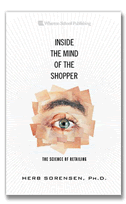At Retail Wire there was a recent discussion headlined “Consumers Go for Bad Idea and Buy Food in Tire Stores,” suggesting that it was a bad idea for Canadian Tire to begin selling groceries. However, a review of some retail fundamentals can provide both retailers and their suppliers with important help in the search for opportunities for expanding business – “outside the box.” Bear in mind that retail is the final commercial link between who people are, and the things they need, want or aspire to. Taking our cue from Maslow’s “hierarchy of [emotional] needs,” we extend such thinking to other kinds of needs, which will lead us to retail merchandise.
On a hierarchical basis, the very most basic physical need that people have is for air. This need is so impelling, and the supply so bountiful, that we often give it little thought. But we do require replenishment of our air supply, at a minimum, within a few minutes. If deprived of air, we will single-mindedly focus on our need for air, very soon.
Water or liquid is our second most urgent need. Depending on our circumstances, we can survive many hours or a few days without replenishing our supply of water or other beverages.
Our third most urgent need is for food – nourishment. For that need we prefer to replenish multiple times per day, but can in fact survive as many as a few weeks without nourishment. Again, it depends on circumstances.
These three are the only absolute physical needs, as clothing, shelter, transportation and a host of other aids to comfort and survival, can be foregone for long periods – if not permanently.
So what does this all have to do with Canadian Tire selling groceries? Simple, the most likely thing shoppers in a Canadian Tire store will need, other than tires, is probably something to drink – and the second most likely thing will be something to eat – for snacking now, or maybe adding to the larder at home or office, later.
Thinking like this requires a retailer to abandon their single-minded obsession with the merchandise they sell, and move to a single-minded obsession with the shoppers in their store. This doesn’t mean there is no place for merchandise specialization, but simply that that specialization ought not to ignore the wider human element of the customer. Shopper centricity requires a proper recognition of the most urgent needs of shoppers, which are food and beverages. (The world’s largest industries!)
Given these considerations, it seems like a no-brainer for a store that often requires a significant amount of waiting by the customer – a tire store, to expand into a wider line of groceries. Historically, retail trends like this created modern “drug-stores” from what were apothecaries dispensing only medicinal and health related items, to emporia for broader human needs – lately in a sensible rush to get into the convenience store business, themselves. But then, those convenience stores were, in turn, the outgrowth of “gas stations” adding convenient purchases to go with the refueling stop – aided and abetted by the refusal of supermarkets to properly serve the 50% of the supermarket shopping trips that purchase 5 or fewer items – one third of total store sales, typically.
The most important asset any retailer has is NOT their merchandise, but the traffic and time that their shoppers spend. Another need that the traffic has – which can become urgent – is the need for rest rooms. Now that we are onto customer centricity, can we use clean, modern rest rooms as a traffic builder? Well, fast food restaurants are probably the premier, reliable supplier of these facilities to an automotive public, followed by convenience stores. Outstanding traffic builders, all!
We often note that, “retailing is at the cutting edge of social evolution – always has been, always will be.” The examples cited above are simply the tip of the iceberg for this concept. If it helps you broaden your vision, and at the same time to sharpen your focus on what shopper centricity really means, mission accomplished.


